HDFS基本API的应用(包含IDEA的基本设置)
在上一篇博客中,本人详细地整理了如何从0搭建一个HA模式下的分布式Hadoop平台,那么,在上一篇的基础上,我们终于可以进行编程实操了,同样,在编程前需要做一些准备工作,好了,那我们就开始吧!
1. 编程准备
在后续的学习中,我们基本都是在用IntelliJ IDEA这款集成开发环境,所以在Windows端,我们首先需要准备以下这三款软件:
1)IntelliJ IDEA软件下载并安装,盗版即可,激活码自己上百度搜,本人使用的版本是IntelliJ IDEA 2019.2.3
2)Hadoop的Windows版本:hadoop-2.7.3下载并配置环境变量,然后在Windows端的hosts文件中务必写上之前搭建的虚拟机主机名和IP地址的映射
3)Maven:后续在大数据学习中需要涉及到大量其他包与包之间的依赖,因此使用Maven可以大幅简化导包的过程,下载并配置Maven的环境变量,apache-maven-3.6.1
4)Maven简介:Maven是一个构建工具,简化了项目的构建流程,进行了依赖管理以及项目信息管理,Maven编程的核心是pom文件,它是一个xml文件,其中,groupId,artifactId,以及version这三个Id指定了一个项目在maven世界中的一个坐标
2. IDEA基本设置
2.1 外观设置及快捷键设置导入
一打开IDEA后,首先点击左下角将左侧边栏打开

导入字体设置:点击Settings,搜索Appearance,右侧更改为自己喜欢的字体,主题即可
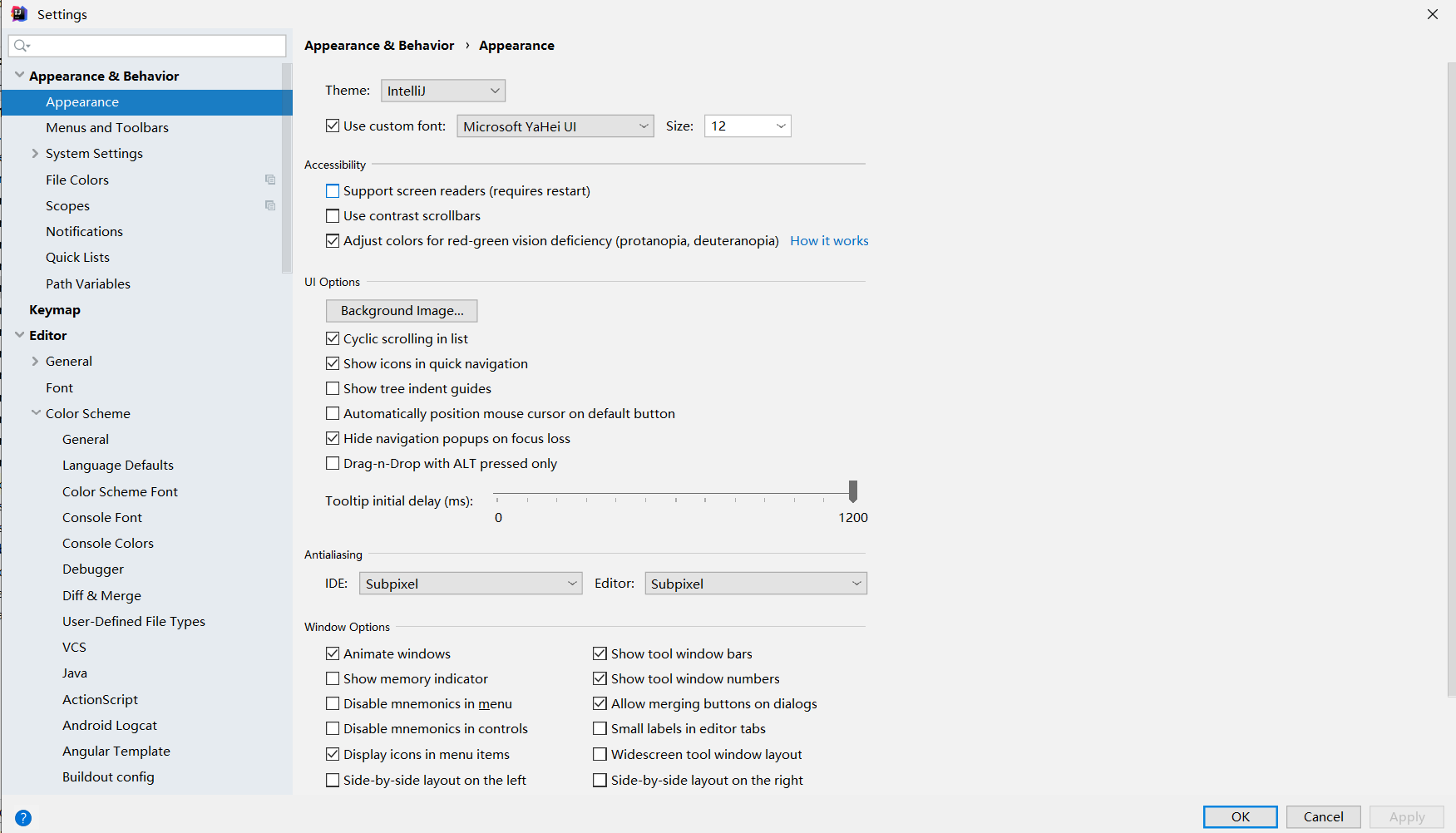
进行快捷键设置或导入自定义快捷键设置:点击Settings -> Keymap,一般来说选择系统默认的就行了

也可以导入自定义设置:点击File -> Import Settings
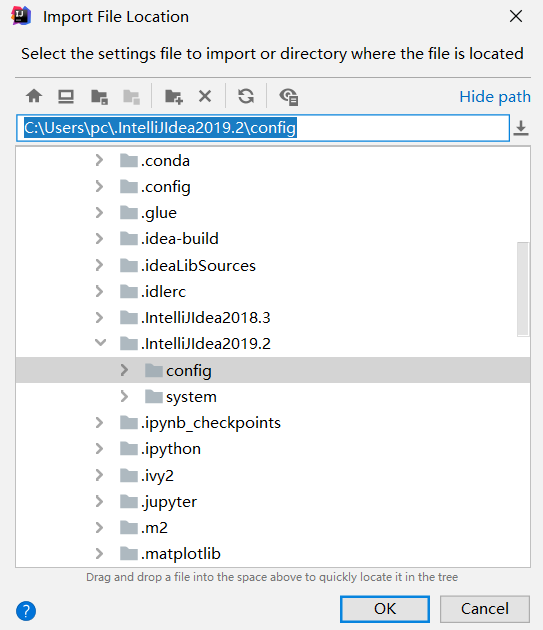
开启Maven的自动导包功能:点击Settings -> 搜索"Maven",其中第一个框中是环境变量设置的MAVEN_HOME,第二个框是设置xml文件,而Local repository指的是当用户install了某个package后可以查看的目录

编译器版本设置:编译器版本不对或过低会导致编译过程报错,因此需要进行设置,点击Settings -> 搜索Java Compiler,将所有出现version的地方都改为8
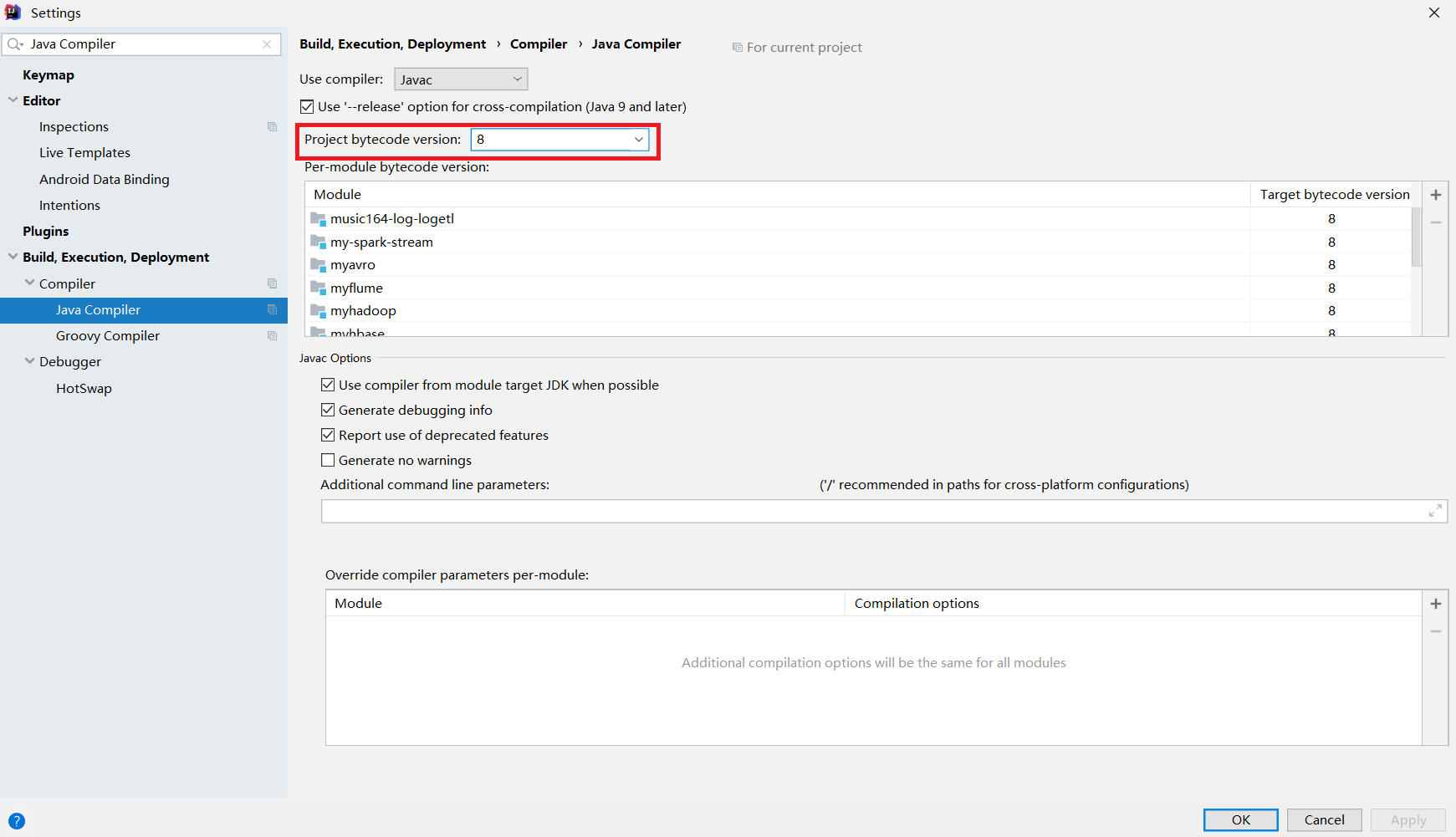
2.2 Maven项目转化步骤
将一个普通的java项目工程转化为Maven项目的具体流程如下所示:
1)添加框架支持,Add Framework Support

2) 拖动到最后,找到Maven,打勾
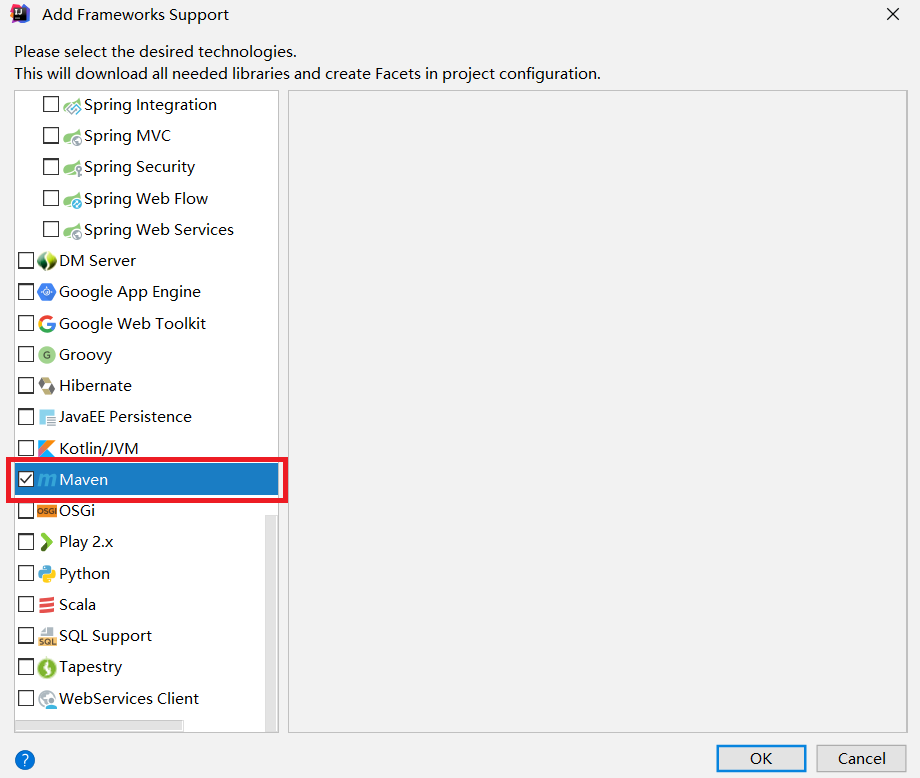
3)此时右下角会出现提示,选择Enable Auto-Import即可
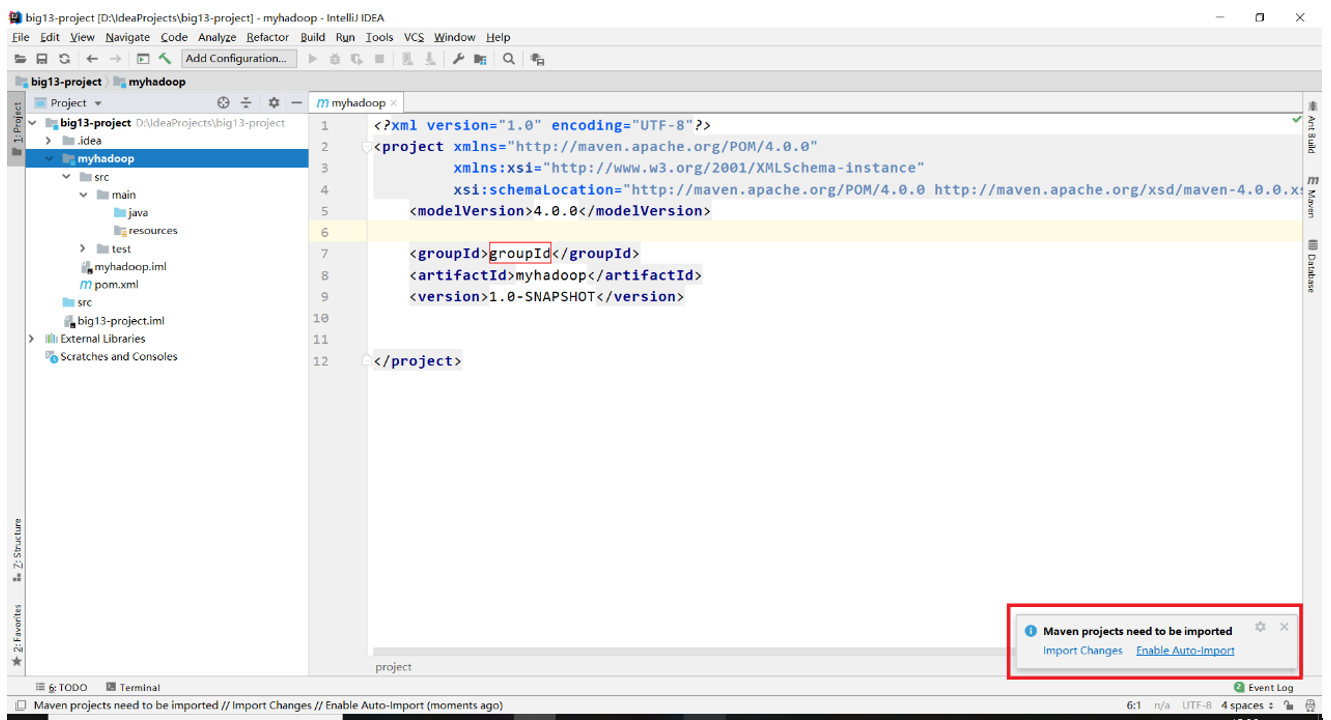
至此,IDEA的基础设置已经完成!
3. Hadoop正式编程
3.1 Maven依赖和资源文件夹
需要注意,下的是什么版本的hadoop在写依赖的时候也要指定相应版本的hadoop,而后续编程会使用到单元测试简化测试流程,因此又需要用到junit这个包,pom.xml文件设置如下:
<?xml version="1.0" encoding="UTF-8"?> <project xmlns="http://maven.apache.org/POM/4.0.0" xmlns:xsi="http://www.w3.org/2001/XMLSchema-instance" xsi:schemaLocation="http://maven.apache.org/POM/4.0.0 http://maven.apache.org/xsd/maven-4.0.0.xsd"> <modelVersion>4.0.0</modelVersion> <groupId>groupId</groupId> <artifactId>untitled</artifactId> <version>1.0-SNAPSHOT</version> <dependencies> <dependency> <groupId>org.apache.hadoop</groupId> <artifactId>hadoop-client</artifactId> <version>2.7.3</version> </dependency> <dependency> <groupId>junit</groupId> <artifactId>junit</artifactId> <version>4.12</version> </dependency> </dependencies> </project>
点进项目结构都可以看到一个名为resources的资源文件夹,往资源文件夹下放入这三个文件:
1. core-site.xml
2. hdfs-site.xml
3. log4j.properties
3.2 文件读写
写出一个helloworld文件到hdfs文件系统上去
//测试文件的写出 @Test public void testWrite() throws Exception{ //需要注意的是,首先要设置成能使用root权限进行文件的读写 System.setProperty("HADOOP_USER_NAME","root"); //新建一个conf对象 Configuration conf = new Configuration(); //使用conf对象获得到 FileSystem fs = FileSystem.get(conf); //设置文件输出的路径 Path path = new Path("hdfs://mycluster/helloworld.txt"); //使用path对象获取到输出流 FSDataOutputStream fos = fs.create(path); for(int i = 0; i < 100; i++){ fos.write("helloworld".getBytes()); fos.write(" ".getBytes()); } fos.close(); }
从hdfs文件系统读取一个文件并打印到控制台
//测试文件的读取 @Test public void testRead() throws Exception{ Configuration conf = new Configuration(); FileSystem fs = FileSystem.get(conf); Path path = new Path("hdfs://mycluster/helloworld.txt"); //输入流的读取方法是open方法 FSDataInputStream fis = fs.open(path); byte[] buf = new byte[1024]; int len = 0; while((len = fis.read(buf)) != -1){ System.out.println(new String(buf,0,len)); } fis.close(); }
使用一个十分方便的工具类IOUtils进行文件的互拷
//使用IOUtils类方便地实现文件的拷贝 @Test public void testCopy() throws Exception{ //首先需要准备好一个输入流以及一个输出流 Configuration conf = new Configuration(); FileSystem fs = FileSystem.get(conf); Path path = new Path("hdfs://mycluster/helloworld.txt"); FSDataInputStream fis = fs.open(path); FileOutputStream fos = new FileOutputStream("d:/helloworld.txt"); //使用IOUtils进行文件拷贝 IOUtils.copyBytes(fis,fos,1024); //关流 fis.close(); fos.close(); }
3.3 Hadoop序列化技术
Hadoop是使用Writable接口下面的各种实现子类来实现序列化技术的,有IntWritable,LongWritable,Text等,查看Writable接口可知它的实现子类需要实现两个抽象方法
void write(DataOutput out) throws IOException; void readFields(DataInput in) throws IOException;
再查看IntWritable类的实现关系可知,IntWritable,Text等都是实现了WritableComparable接口,而这个接口又继承了Comparable接口,其中有一个方法要实现
public int compareTo(T o);
自定义Student类
public class Student { private int id; private int age; public Student() { } public Student(int id, int age) { this.id = id; this.age = age; } public int getId() { return id; } public void setId(int id) { this.id = id; } public int getAge() { return age; } public void setAge(int age) { this.age = age; } @Override public String toString() { return "Student{" + "id=" + id + ", age=" + age + '}'; } }
自定义StudentWritable类实现Writable接口
import org.apache.hadoop.io.Writable; import java.io.DataInput; import java.io.DataOutput; import java.io.IOException; /* 自定义一个类继承Writable接口 */ public class StudentWritable implements Writable { private Student stu; public StudentWritable(Student stu) { this.stu = stu; } public Student get() { return stu; } public void set(Student stu) { this.stu = stu; } public void write(DataOutput out) throws IOException { out.writeInt(stu.getId()); out.writeInt(stu.getAge()); } public void readFields(DataInput in) throws IOException { //注意:在这里需要先初始化Student对象,再把该对象的成员变量当成容器获取读取到的值 stu = new Student(); stu.setId(in.readInt()); stu.setAge(in.readInt()); } }
测试各种数据类型的序列化以及反序列化
import org.apache.hadoop.io.IntWritable; import org.apache.hadoop.io.Text; import org.junit.Test; import java.io.DataInputStream; import java.io.DataOutputStream; import java.io.FileInputStream; import java.io.FileOutputStream; /* 测试hadoop的序列化技术 */ public class TestSerial { //序列化一个数字 @Test public void testSerial1() throws Exception{ //新建一个IntWritable对象 IntWritable iw = new IntWritable(100); //新建一个数据流 DataOutputStream dos = new DataOutputStream(new FileOutputStream("d:/test.h")); //调用iw的write方法将数据写出到磁盘 iw.write(dos); //关流 dos.close(); } //反序列化 @Test public void testDeserial1() throws Exception{ //构造一个空的IntWritable对象,相当于是一个空蓝子 IntWritable iw = new IntWritable(); //新建一个数据输入流 DataInputStream dis = new DataInputStream(new FileInputStream("d:/test.h")); //将数据装入篮子 iw.readFields(dis); //从篮子获取数据 System.out.println(iw.get()); //关流 dis.close(); } //序列化一个字符串 @Test public void testSerial2() throws Exception{ Text text = new Text("helloworld"); DataOutputStream dos = new DataOutputStream(new FileOutputStream("d:/test1.h")); text.write(dos); dos.close(); } //反序列化 @Test public void testDeserial2() throws Exception{ Text text = new Text(); DataInputStream dis = new DataInputStream(new FileInputStream("d:/test1.h")); text.readFields(dis); //Text对象调用的是toString方法 System.out.println(text.toString()); } //序列化一个对象 @Test public void testSerial3() throws Exception{ StudentWritable sw = new StudentWritable(new Student(1, 18)); DataOutputStream dos = new DataOutputStream(new FileOutputStream("d:/test2.h")); sw.write(dos); dos.close(); } //反序列化 @Test public void testDeserial3() throws Exception{ StudentWritable sw = new StudentWritable(new Student()); DataInputStream dis = new DataInputStream(new FileInputStream("d:/test2.h")); sw.readFields(dis); System.out.println(sw.get().toString()); } }
compareTo方法:由于后续讲到hadoop的二次排序时会遇到需要重写compareTo方法 的场景,因此需要进行相应练习
import org.apache.hadoop.io.WritableComparable; import java.io.DataInput; import java.io.DataOutput; import java.io.IOException; /* 自定义一个类继承WritableComparable接口 */ public class StudentWritable2 implements WritableComparable<StudentWritable2> { private Student stu; public StudentWritable2(Student stu) { this.stu = stu; } public Student get() { return stu; } public void set(Student stu) { this.stu = stu; } public void write(DataOutput out) throws IOException { out.writeInt(stu.getId()); out.writeInt(stu.getAge()); } public void readFields(DataInput in) throws IOException { //注意:在这里需要先初始化Student对象,再把该对象的成员变量当成容器获取读取到的值 stu = new Student(); stu.setId(in.readInt()); stu.setAge(in.readInt()); } public int compareTo(StudentWritable2 o) { //实现二次排序功能,id不一样就升序比较id,否则就比较age,降序排列 return this.stu.getId() == o.stu.getId()? o.stu.getAge() - o.stu.getAge(): this.stu.getId() - o.stu.getId(); } }